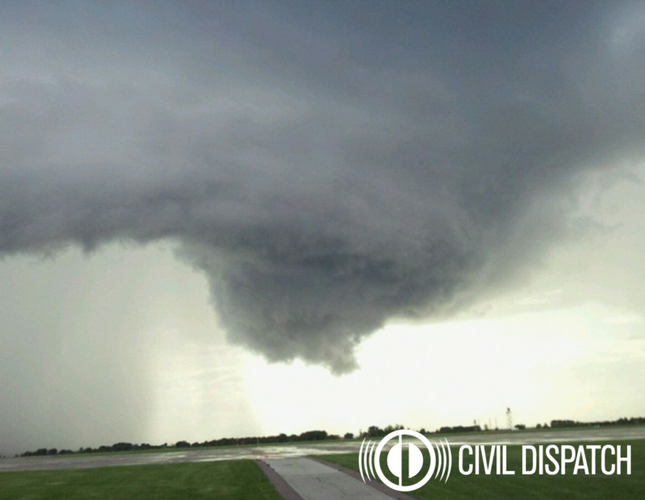
Tornadoes are nature’s most violent storms and can appear at the drop of a hat. They appear as rotating funnel clouds and their winds can reach up to 300 miles per hour and can travel for quite some time, damaging everything in their paths. With tornado season upon us, it’s important to know the steps that you and your family should take to be prepared before, during, and after a tornado.
Before A Tornado:
- As per any natural disaster, you should build an emergency kit and make an emergency plan with your family.
- Be on alert for approaching storms by watching the weather or listening to the NOAA Weather Radio. Tornadoes usually occur at the tailend of a thunderstorm.
- The following signs usually occur right before a tornado:
- Dark, often greenish, sky
- Large hail
- A large, dark, low-lying cloud
- Loud roar, similar to a freight train
- Not uncommon for it to be extremely calm and still outside before a tornado
During A Tornado:
There are different shelters you should go to during a tornado depending on what kind of structure you are in at the time the tornado starts.
Here are the steps you should take for each situation:
- A structure (school, nursing home, residence hall, etc.)
If you find yourself in a structure such as the ones listed above, you should go to a pre-designated area like a basement or a storm cellar or the center of a small interior room on the lowest level. You should get under a sturdy table and use your arms to protect your head and neck. Put on sturdy shoes and do not open any windows. - A manufactured home or office
If you are at work when a tornado occurs, get out immediately and go to a pre-identified location such as the lowest floor of a sturdy nearby building. Mobile homes, even if they are tied down, don’t offer protection from these storms - Outside with no shelter
There is no recommendation for a last resort if you are outside when a tornado occurs, but if you find yourself in this situation, immediately get in your vehicle, buckle your seat belt and try to drive to the closest sturdy shelter. If you can’t drive, put your seatbelt on and cover your head with your arms. Never get under an overpass or bridge. You are safer in a low, flat location. Never try to outrun a tornado! And always watch out for flying debris.
After A Tornado:
The aftermath of a tornado can be both traumatizing and confusing to you, your family, and your pets.
Here is a list of things you can do to help your family and your community:
- Listen to local officials for any instructions.
- Check-in with your family as soon as you can get a hold of them.
- Watch out for scattered debris and power lines. If you are trapped, do not move any debris. Tap on a pipe or make noise so rescue crews can hear you.
- Photograph the damage to your property for insurance purposes.
- If your home is without power, use flashlights rather than candles to prevent fires.
Important Tornado Facts And Terms To Know:
- Tornadoes strike quickly and without warning
- Peak tornado season in the southern states is March through May; in the northern states, it is late spring through early summer.
- They may appear transparent until they pick up dust and debris along the way
- Tornado Watch- Tornadoes are possible. Remain alert for approaching storms. Watch the sky and stay tuned to the weather radio.
- Tornado Warning- A tornado has been sighted or indicated by weather radar. Take shelter immediately.